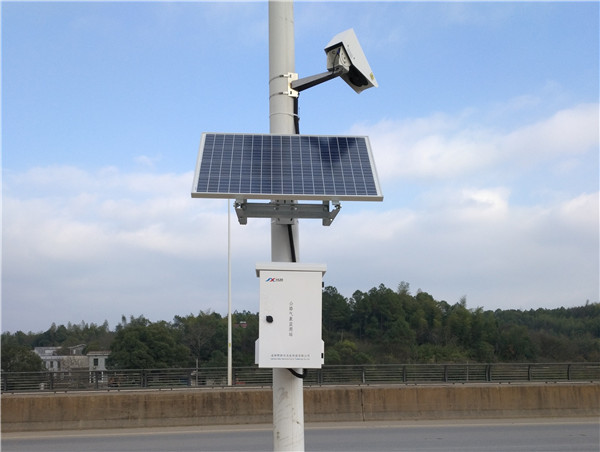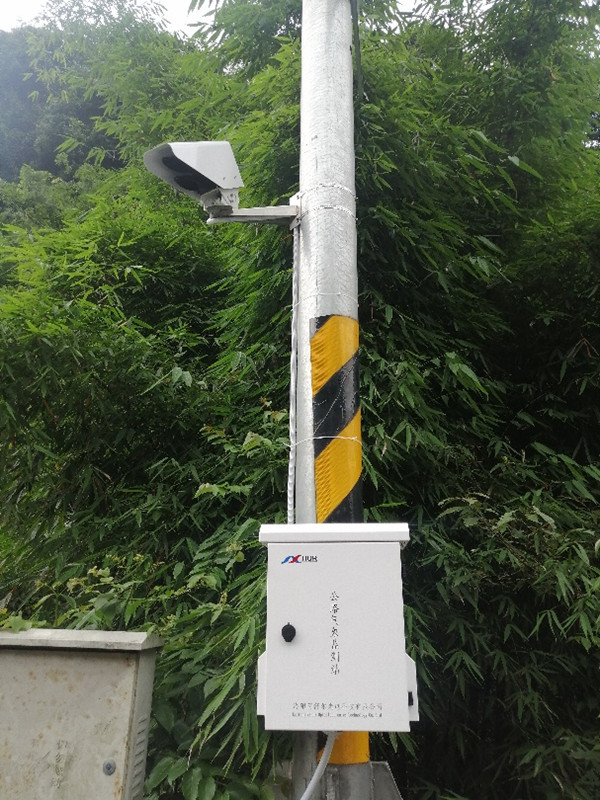
System Overview
1. System Introduction
Road (ice and snow) surface condition monitoring is an important basis for scientific road operation. Pavement conditions such as rain, snow, snow, ice (frozen), and high road temperature have a direct impact on the safe operation of the road. According to statistics, ice and snow roads have an impact on road traffic safety in winter and have become the killer of winter traffic safety. Their impact on roads mainly includes safety impact: in ice and snow conditions, roads can easily cause vicious traffic accidents such as multi-vehicle collisions; economic impact: traffic accidents not only cause heavy casualties, but also bring significant economic consequences.

In recent years, many major traffic accidents caused by severe weather conditions have occurred in our country, causing great losses to people's lives and property, and also attracting the attention of relevant departments. Investigations have found that the main cause of traffic accidents on ice and snow roads is driving. It was caused by the driver's underestimation of the severity of the road environment, excessive vehicle speed, slippery road surface, and insufficient distance between vehicles.
At about 9 a.m. on November 21, 2016, due to rain and snow, a multi-vehicle rear-end accident occurred at 65km+500m in the Taiyuan direction of the Pingyang section of the Beijing-Kunming Expressway. There were 56 vehicles involved in the accident, and a total of 54 people were injured, including 17 people died. This traffic accident was caused by icy and slippery roads in rainy and snowy weather. The ice on the ground caused the vehicle to lose its grip, and the heavy truck body caused a series of collisions.

On January 17, 2016, Weifang ushered in rain and snow, and the roads were icy and the ground was slippery. Multiple vehicle collisions occurred on the long downhill section of Shanglindongling, Linqu County, S223 Provincial Highway (Weijiu Road). Subsequently, the Weifang Traffic Police Detachment announced that the accident was caused by icy roads in rainy and snowy days, slippery roads and improper operation by drivers, resulting in many traffic accidents.
The picture shows the scene of the accident on the long downhill section of Shanglindongling, Linqu County, S223 Provincial Road (Weijiu Road)
If the driver has a full understanding of the road surface conditions and traffic conditions, and obtains real-time information on the road surface conditions, the probability of accidents will be significantly reduced. This is why we need to set up weather monitoring and on-site warning release systems on the roads. The purpose of its setting is to provide information such as icing location, icing time, icing degree, etc., to realize automatic alarm and early warning functions for affected roads within the guaranteed road, so that the road safety management department can timely and accurately grasp the road conditions and weather along the route. information and take timely and effective response measures to ensure safe and smooth driving.
The system adopts a multi-point deployment and network monitoring operation mode to continuously obtain meteorological and road condition information at multiple points along the line, feed it back to the monitoring center, and compare the detection data with predetermined judgment conditions to determine whether there is rain, snow, Severe weather such as icing; when severe weather is determined, the early warning level and alarm prompt are determined by comparing the detection data with the predetermined indicator library; then the corresponding control strategy is called from the predetermined strategy library according to the indicator control level to deal with severe weather. The impact caused by the road, so as to ensure the operation of the road all-weather.
2. System Composition and Working Principle
This system consists of the following two parts:
(1)Monitoring station:
Including: remote sensing road condition detector, comprehensive meteorological data collector, equipment structure pole, power supply and collection control box, etc., which can expand visibility, conventional temperature and humidity, wind speed and direction, rainfall and other detection elements.
(2)Monitoring platform software:
It includes: road weather automatic monitoring software module, monitoring data analysis and early warning software module, road icing early warning information SMS release module, etc.
Working principle of the system: The system can remotely sense and measure meteorological elements such as road conditions (road temperature, road conditions: dry, wet, frost, snow, ice, ice-water mixture), and use this as a basis to determine the changing trends of relevant atmospheric physical variables. This provides early warning of road conditions and changes at that time; the traffic weather monitoring station automatically uploads real-time monitoring data to the traffic control department monitoring center. The monitoring center is equipped with corresponding traffic weather monitoring platform software. The software platform performs data monitoring at multiple sites, and data analysis and judgment. For monitoring work such as road weather warning and road icing judgment, the software's multiple modules work together, and staff can call historical data and log records at any time to guide decision-making and emergency plans. At the same time, the threshold, corresponding alarm text, SMS text library, etc. are set in the background monitoring platform software according to regulations. Once the detection value reaches the corresponding threshold, the corresponding alarm information will be sent to relevant personnel as SMS reminders.
3. Main Technical Indicators
|
Measurement Elements |
Measuring Range |
Resolution |
Accuracy |
|||
|
Road Temperature |
-40~+80℃ |
0.1℃ |
±0.5℃ |
|||
|
Road Condition |
Water: 0-10mm;
|
0.01mm |
0.82~0.7 |
0.7~0.6 |
0.6~0.3 |
0.3~0.01 |
|
Good |
Slippery |
Very slippery |
Extremely slippery |
|||
|
Wet slip coefficient: 0-1 |
0.01 |
Equivalent to the road friction coefficient evaluation |
||||
|
Can distinguish road condition: dry, wet, frost, snow, ice, ice-water mixture |
||||||
|
Rower Supply |
AC mains power supply or DC solar power supply |
|||||
|
Transfer Method |
Standard RS232 interface, which can be expanded to GPRS/CDMA, RJ45 and other communication interfaces through functional modules |
|||||